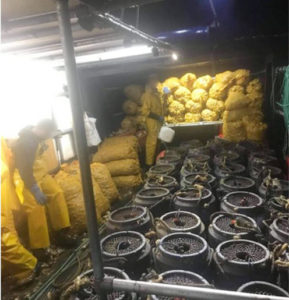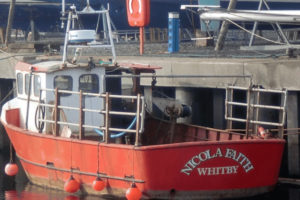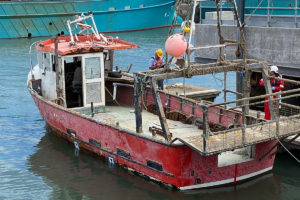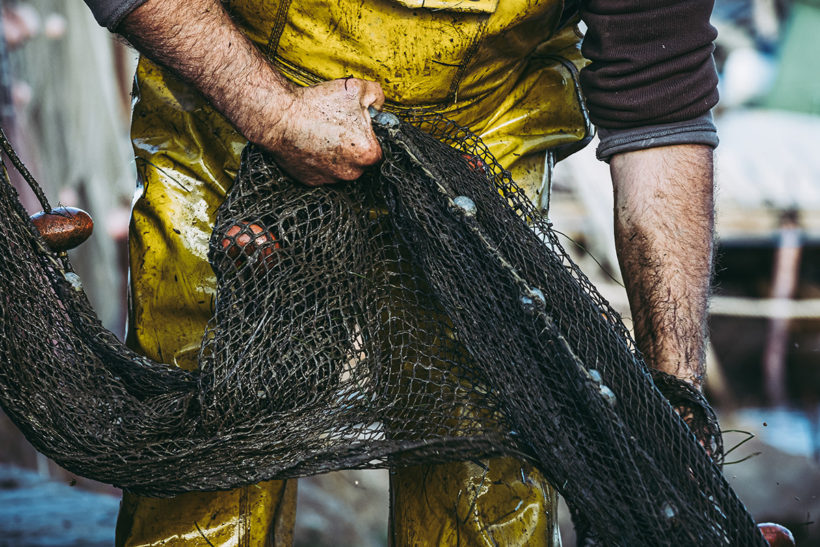Following the publication of its reports into the Joanna C and Nicola Faith tragedies, the Marine Accident Investigation Branch team highlights the safety lessons for the industry
As operating costs continue to rise, inevitably there will be an appetite to get more bang for your buck. Continuing to fish in worsening weather instead of fishing another day is clearly dangerous, but there are other, less obvious, risks to running a lean operation.

The Nicola Faith heavily loaded on a previous voyage.
For example:
- You might always have left port with full fuel tanks in the past, but with soaring fuel prices there is a strong temptation to fill up less often and run the tanks lower than normal. Operating with less fuel onboard can affect stability as it reduces weight stowed low down in the vessel.
- Operating with fewer crew or taking shorter rest periods and working longer hours might be considered as ways of increasing productivity. While such steps might bring some short-term gains, the cumulative effects can be catastrophic. Tired people have slower reaction times, they make more errors, and they sometimes fall asleep on the job. There is increased operational risk, which in turn increases the chance of an emergency.
- For potters and others operating static gear, the temptation to carry more gear to the fishing grounds to save doing multiple trips can be tempting. However, the weight of the gear plus the weight of a day’s catch onboard can be overwhelming, especially if much of the weight is carried on deck.
All vessels have limits when it comes to what weight they can safely carry, but that limit is not constant – it changes with weather conditions, the amount of fuel, water and ice consumed, and the way the deck and holds are loaded.

The Nicola Faith prior to modifications…
Previous success is never a good indicator that the ‘same’ load can be carried again, as conditions will be different every trip. It is vital that skippers know the limits of their vessel and understand how small changes in loading and tank levels can have an adverse effect.
All small fishing vessels are required either to be maintained to a construction standard or, for older vessels, to undergo a periodic stability assessment. A simple Wolfson calculation (explained in MGN 526) will identify what freeboard needs to be maintained for safe operations in differing sea states.
Freeboard is difficult to measure at sea, but taking regular measurements once back alongside and keeping a note in the logbook of freeboard against landed weight of catch and fuel tank levels will quickly build a picture of how loaded weight affects the vessel’s freeboard and safety margin of stability. Additionally, a roll test (explained in MGN 503) will easily identify if a vessel is tender or stiff.
If a vessel is only marginally tender, removing top weight where possible and storing unused gear below decks can help improve stability. A Wolfson assessment and roll test can be done by a skipper totally free of charge, and may well identify how close to the limit current operations are.

… and after being modified.
Finally, modifications, however small, can make a significant difference to a vessel’s stability. It is often difficult to find out what modifications have been made to a vessel during previous ownership, and the vessel might be quite different now to how it was designed and built.
Even seemly reasonable modifications can make the difference between a safe and a dangerous vessel, and professional advice and MCA approval should always be sought before making any modifications or replacing equipment.
Know your limits, operate within them, and get home safe.
This story was taken from the latest issue of Fishing News. For more up-to-date and in-depth reports on the UK and Irish commercial fishing sector, subscribe to Fishing News here or buy the latest single issue for just £3.30 here.






